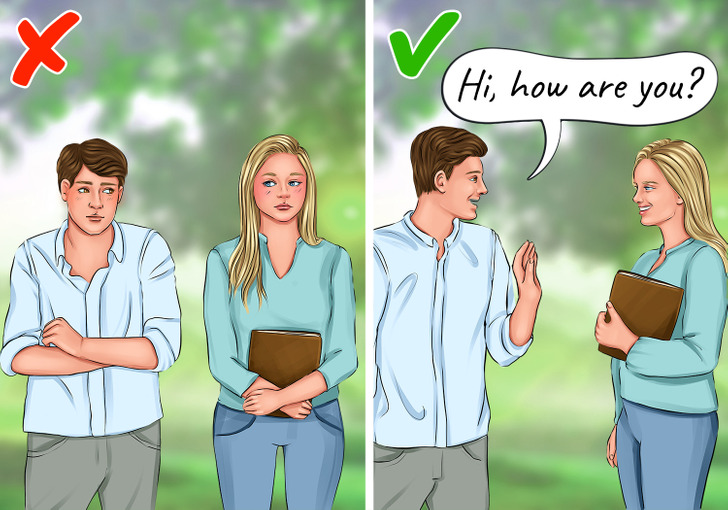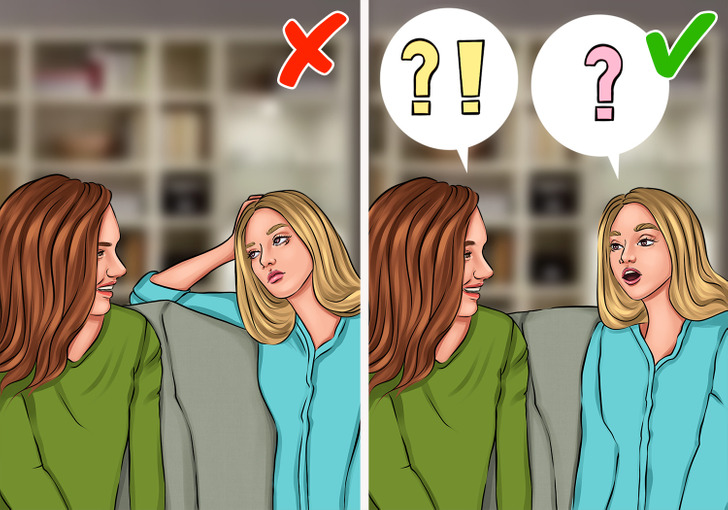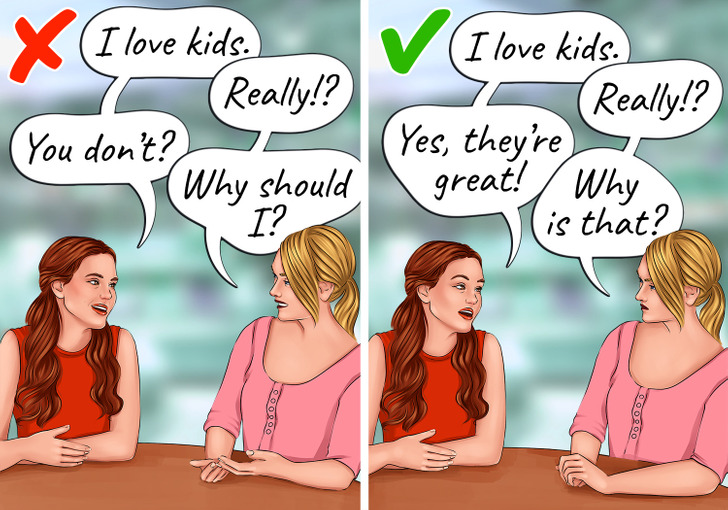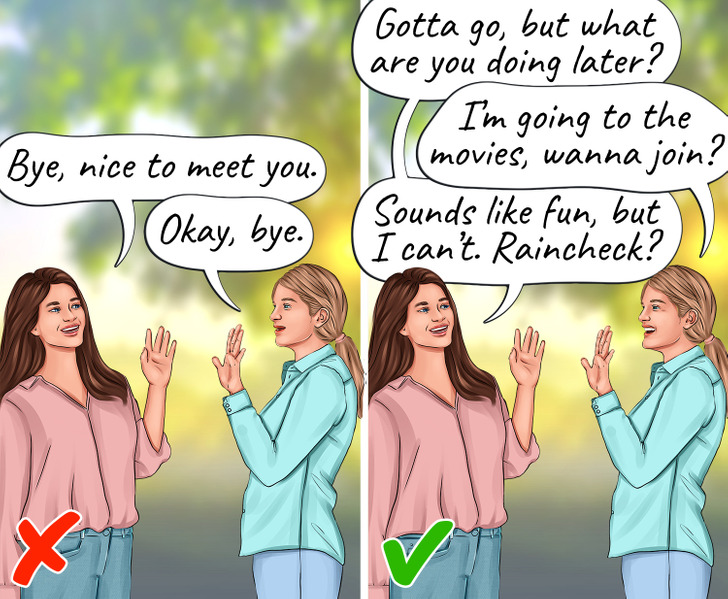How to Talk to Anyone
Humans are social beings, and interaction is essential to every aspect of our health. But talking to new people is not easy for everyone. Possessing such a skill is, without question, of great benefit. It can allow you to make new friends, meet a romantic partner, or even materialize a new career or business opportunity. 5-Minute Crafts is going to tell you how to talk to anyone.
1. Set your intention before starting the conversation.

First, you want to think before you meet someone or go to an event in terms of what you want to bring to the event and what you want to get from it. Your conversation will be different depending on whether you want to make a friend, get new business, meet a potential significant other, or have a good time. Setting that intention can help you guide the conversation.
2. Think about how you’ll approach the person you’ll talk to.

A first impression comes from how you approach someone, not from the first thing you say. For that reason, think about your body language. Set yourself up with nice, open body language. Your hands should be visible, out of your pockets, not touching a bag or hiding behind your back. That way, you will look like someone who can be trusted. Keep your shoulders down and back. Don’t turtle because you will give the impression of having anxiety. Put a smile on your face as an opening line to warm the conversationalist.
3. Think about the opening line.

Make your first sentence as simple as possible. Don’t complicate things. It is best to introduce yourself with a smile on your face and ask your conversationalist, “How are you?” Then you can move on to compliments. They only work if they are a reflection of what we sincerely think and if they are given freely and not coerced. Compliments backfire if they are not genuine. Faux flattery is always easily noticed. A person who gives false compliments looks untrustworthy. It raises suspicions about motives, and that can undermine a whole relationship.
4. Be a good listener.

The best way to have a successful conversation with someone is to be a good listener. Don’t be afraid of awkward silences, and don’t try to fill it with chatter about yourself. You can restate what you heard or at least what you think you heard. That way, you are showing that you are listening, and the other person can clarify something for you. Watch for a nonverbal cue that your conversation partner is not comfortable with where the conversation is heading and change the topic if needed.
5. Think about conversation sparks.

To make the conversation run smoothly, look for the conversation sparks. These are things that make the conversation dazzling and not dull. A non-verbal universal cue that implies whoever you’re talking to is super engaged in the conversation is their eyebrows raising in pleasant excitement and surprise. You should search for topics, conversations, and stories that can make them say, “Oh, really? Me too!” Think about the questions you can ask that will lead you to the common things you love. Then pay attention to their eyebrows — if they are raised, you know you have hit a topic that is common between you, and you can continue the conversation in that direction.
6. Avoid oversharing.

People don’t feel comfortable when someone shares their deepest secrets with them. Their first impressions of you can be altered by your oversharing. It can also make them think about your boundaries and self-esteem. Oversharing doesn’t promote healthy relationships. Instead, it tends to make other people feel awkward. They might feel pressure to match the sharing, and this can make them feel discomfort and resentment. Before you start talking about something private, think about how you would feel if a stranger told you personal things. Also, you don’t want to look boring. And finally, you may see that person again, or they might know someone you know, so your personal matters can quickly become public.
7. Don’t assume people will agree with you.

Research shows that many of us engage in the “assumed similarity bias.” When starting a conversation, keep in mind that not everyone will agree with you. If you assume that everyone has the same point of view as you, the conversation will start badly, and you may say something foolish, embarrassing, or tactless.
- Note: A bias is a tendency, inclination, or prejudice toward or against something or someone. This can be positive or negative.
8. Think about how you will end the conversation.

The end of the conversation is also important because you want to leave a lasting impression on someone. So you can end the conversation by asking what they plan to do in the near future. This way, you shift the focus from the present to the future. When you get an answer from your conversationalist, tell him or her that you were glad to meet them and wish them well for the future.